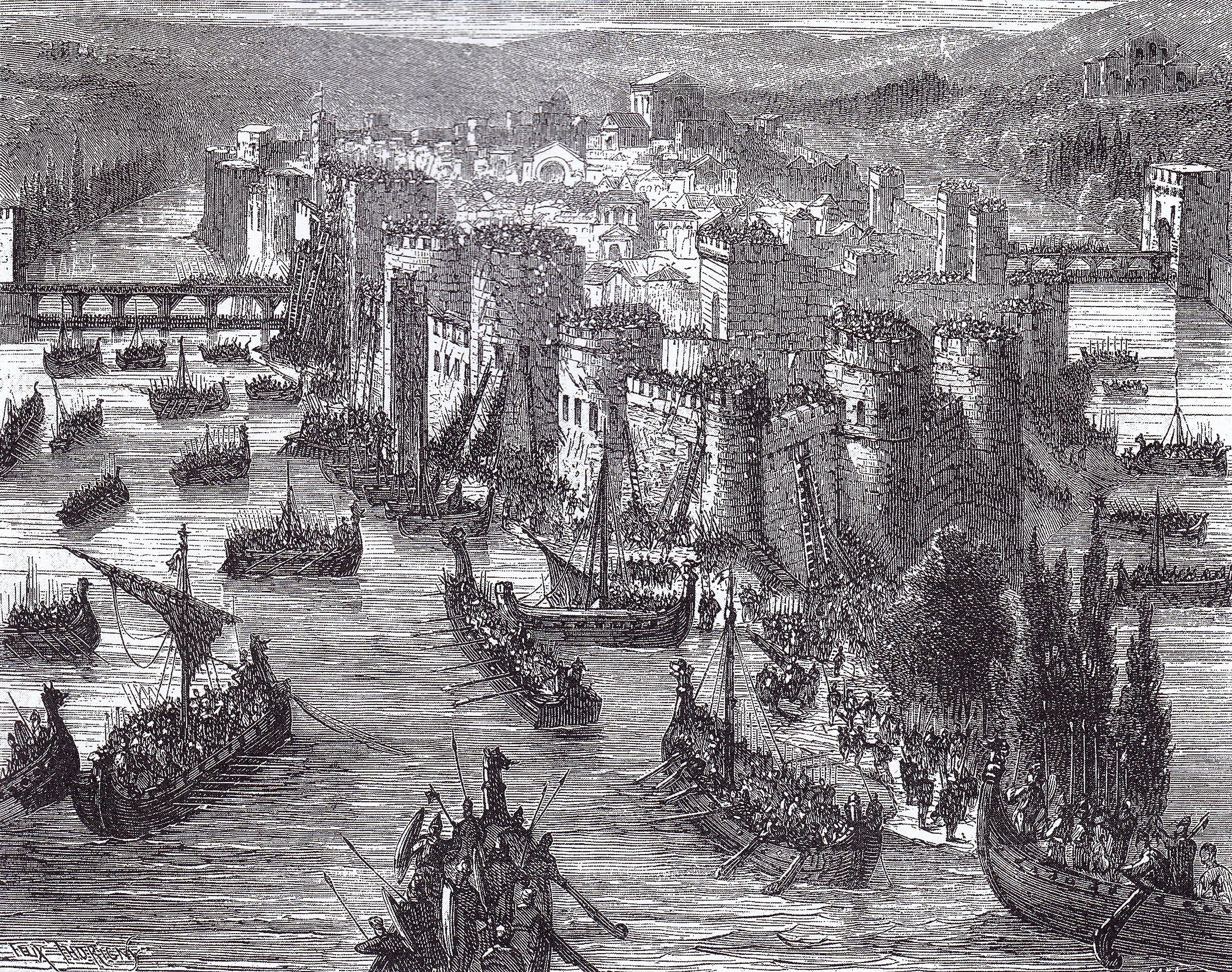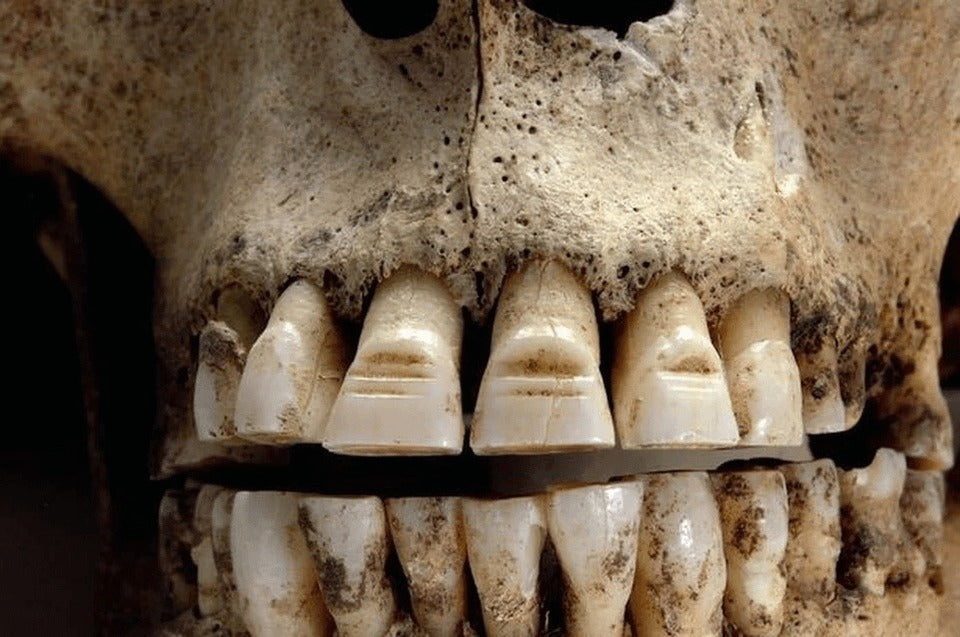
How Norse Mythology Started: An Evolution of Beliefs
Norse Mythology and Vikings culture, also known as Norse paganism, is a branch of Germanic religion that emerged during the Proto-Norse period. This era witnessed the separation of North Germanic peoples into a distinct branch within the broader Germanic cultural landscape. Norse mythology, synonymous with the Scandinavian mythological framework, flourished during the turbulent era surrounding the Viking Age (c. 790 - c. 1100 CE). Within this rich tapestry of lore, we uncover the evolution of beliefs that would shape the very fabric of Northern European spirituality and answer the commonly asked questions, such as when Norse Mythology started, and where is Norse Mythology from?
Evolution from Germanic Paganism
The Norse gods, the mythological characters from stories shared by Northern Germanic tribes of the 9th century AD, are the best-documented form of Germanic pagan religions. These stories were passed down in the form of poetry until the 11th – 18th centuries when the Eddas and other medieval texts were written. The evolution of Germanic paganism was not isolated but was influenced by neighbouring cultures, including that of the Celts, the Romans, and, later, by the Christian religion.

The Gundestrup Cauldron. Found in a bog in Denmark, the cauldron was likely made by Celts in Romania or Bulgaria. Decorated with motifs from Celtic mythology, it is evidence of Celtic-Germanic contact. (Public Domain)
Are Norse and Germanic mythology the same? To answer this question, it's essential to understand the origins of Norse Mythology, which is a direct evolution of Germanic paganism and myth. Originating in the lands east of the Rhine, known as ‘Germania’ by the Romans, Germanic tribes migrated northward during the first millennium BCE, including into Scandinavia and other parts of Europe. Notable among these tribes were the South Germanic Goths (Geats), closely related to the Germans, who settled in future Denmark and southwestern Sweden. Subsequently, northeastern Sweden and Norway saw invasions by North Germanic tribes traveling up the Gulf of Bothnia into Scandinavia. The Suiones (Swedes), Gutes, Danes, Raumarici, Arothi, Adogit, among others, also played significant roles in this process. Over time, the original Germanic beliefs and cultures gradually morphed and changed, influenced by the different environment and the culture of the native Sami people inhabiting Scandinavia. This historical evolution underscores the relationship between Norse and Germanic mythology, shedding light on the distinctiveness and interconnectedness of these belief systems, and prompting further exploration into what is Germanic mythology.

"Pastor Laestadius instructing the Sámi" by François-Auguste Biard (Public Domain)
The Sami people were prominently indigenous to the northern lands of Scandinavia. They had their own unique beliefs practices and rituals. Over time, their culture would influence Proto-Norse culture. This is especially evident in the incorporation of Sami practices into Norse rituals, their depictions in Norse literature as skilled practitioners of magic, and their shared mythological themes. The Sami were renowned for their shamanistic practices, which likely influenced Norse Paganism. Shamanism, a spiritual practice centred around a mediator who can interact with the spirit world, was a significant part of Sami culture. Norse paganism also incorporated elements of shamanism, particularly in the practice of Seidr (magic), a type of sorcery or witchcraft. The similarities between these practices and mythological stories suggest a possible influence or exchange of ideas. For instance, both mythologies feature a thunder god: the Norse have Thor, while the Sami have Horagalles. This similarity could indicate a shared or mutually influenced belief system. However, it’s important to note that while there was interaction and influence, the Sami and Norse cultures remained distinct. The Sami had their own rich spiritual traditions and practices, which they maintained even as they interacted with the Proto-Norse.
Indo-European Roots

Depictions of Zeus and other ancient deities across diverse mythologies may trace their origins to earlier Proto-Indo-European concepts of a "sky father" deity. Image by Nancy Anburaj (Public Domain)
Germanic paganism, and in turn its Norse variant, has its roots planted in Proto-Indo-European religion. Germanic languages development and mythology can be traced back to the Proto-Indo-European. There is a lack of knowledge for this time era, due to the lack of recorded history, but there are many similarities with this ancient mythology when compared to its Germanic and Nordic successors. Such as the Sky Father, who’s characteristics are fairly similar to the gods Tyr, Odin and somewhat Thor (and Zeus from Ancient Greece). Over time, these myths and stories were adapted and transformed by the various cultures that descended from the Proto-Indo-Europeans, leading to the unique mythologies we see today, including the Germanic mythology, and Celtic. It’s fascinating to see how ancient cultures and languages have influenced the development of later societies and belief systems!
Similar Religions to Norse Paganism
Just as Norse Paganism can be traced all the way back to Germania, the same can be done with varying other folk scattered across Europe. Before the Roman Empire invaded England, Anglo-Saxons lived by a religion practically identical to Norse Paganism. They were a combination of the two Germanic tribes, Angles and Saxons, as well as a mixture of Southern Scandinavians. Anglo-Saxon Paganism was practiced by the Anglo-Saxons between the 5th and 8th centuries AD, during the initial period of Early Medieval England. It was a variant of Germanic paganism found across much of north-western Europe, encompassing a variety of beliefs and cultic practices, with much regional variation. The most prominent deities were Woden (Odin), Thunor (Thor), and Tiw (Tyr). There was also a belief in a variety of other supernatural entities which inhabited the landscape, including elves, nicors, and dragons. The religion was also influenced by the cultures of neighbouring societies across the North Sea and Baltic.

The B inscription on the Negau helmet, c. 450-350 BCE. This inscription may be the earliest attestation of the Germanic god Tyr's name.
Continental Germanic Paganism also formed an element within Germanic paganism as practiced in parts of Central Europe occupied by Germanic peoples up to and including the 6th to 8th centuries. Traces of some of the myths lived on in legends and in the Middle High German epics of the Middle Ages. Compared to Norse and Anglo-Saxon paganism, examples of Continental Germanic paganism are extremely fragmentary. The religion was influenced by the cultures of neighbouring societies.
Forgotten Religions

Losungen by Emil Doepler (Public Domain)
While Norse paganism was replaced by Christianity and forgotten during the Christianisation of Scandinavia, it wasn’t the only one. Many ancient religions, once vibrant and integral parts of their societies, have been lost to time. These forgotten religions span across various cultures and epochs, each with their unique beliefs, rituals, and practices.
However, the influence of these forgotten religions, including Norse paganism, can still be seen in modern customs and beliefs. For instance, many contemporary spiritual practices, philosophy, and art have incorporated concepts and ideas from ancient religions, including Norse Mythology and Christian similarities. Similarly, many pagan myths, legends, and folklore from Scandinavia and other places across Europe still influence popular culture today and have even been adapted into newer religions. This demonstrates how Norse mythology affects us today, shaping our understanding of spirituality and contributing to the rich tapestry of cultural heritage and modern storytelling.
Conclusion
As we bid farewell to the realms of gods and giants, the legacy of Norse Mythology endures, its echoes reverberating through the corridors of time. In tracing its evolution, we find not merely a collection of ancient beliefs, but a testament to the enduring spirit of human imagination and the eternal quest for understanding. So let us continue to delve into the depths of our past, for in understanding how Norse Mythology started, we glimpse the profound complexities of human thought and the enduring power of storytelling to illuminate the darkest corners of our souls.
Citations
ANDRÉN, A. (2005). Behind ‘Heathendom’: Archaeological Studies of Old Norse Religion. Scottish Archaeological Journal, [online] 27(2), pp.105–138. Available at: https://www.jstor.org/stable/27917543.
Anon, (2022). Germanic Paganism Vs. Norse Paganism - NorseMythologist. [online] Available at: https://norsemythologist.com/germanic-paganism-vs-norse-paganism/.
Carter, R. (2023). What is Norse Paganism? An Introductory Guide. [online] Scandification. Available at: https://scandification.com/norse-paganism/.
Conroy, W. (2023). Viking Trade: Exploring the Economic Impact of | AncientPedia. [online] ancientpedia.com. Available at: https://ancientpedia.com/viking-trade/ [Accessed 26 Mar. 2024].
Grzybowski, L.G. ed., (2021). Introduction. [online] Cambridge University Press. Available at: https://www.cambridge.org [Accessed 26 Mar. 2024].
innerlightjournal.com. (2024). Exploring the Roots of Modern Spirituality: A Profound Journey Through Ancient Traditions - InnerLight Journal. [online] Available at: https://innerlightjournal.com/roots-of-modern-spirituality/#google_vignette [Accessed 26 Mar. 2024].
Karl Andersson (n.d.). Scandinavian, Viking & Germanic Links Explained (With Maps). [online] Available at: https://nordicperspective.com
Perabo, L. (2016). Column: Shamanistic Echoes in the Arctic North - Paganism, Perspectives. [online] The Wild Hunt. Available at: https://wildhunt.org/2016/04/column-shamanistic-echoes-in-the-arctic-north.html [Accessed 26 Mar. 2024].
Wikipedia. (2020). Christianization of Scandinavia. [online] Available at: https://en.wikipedia.org








